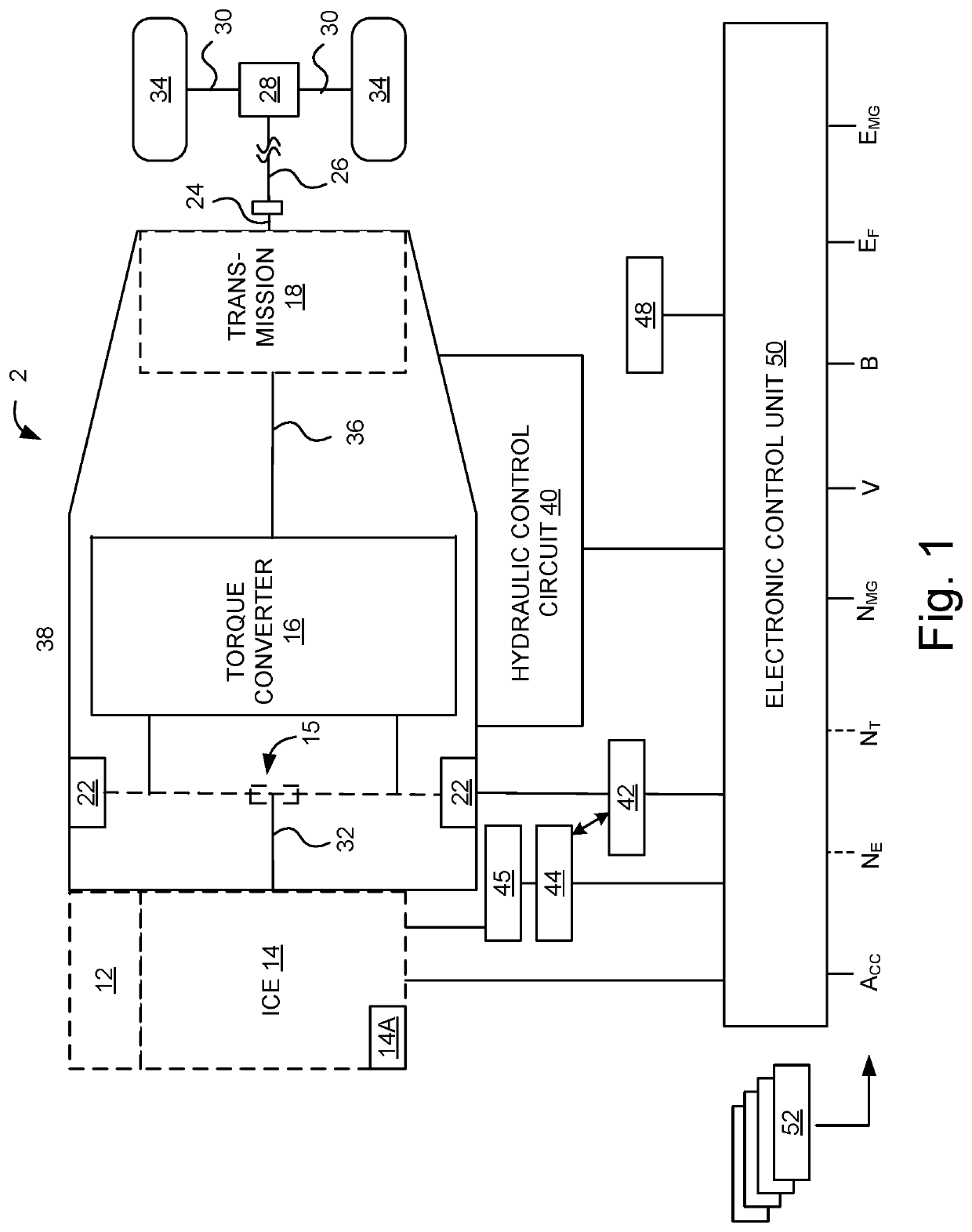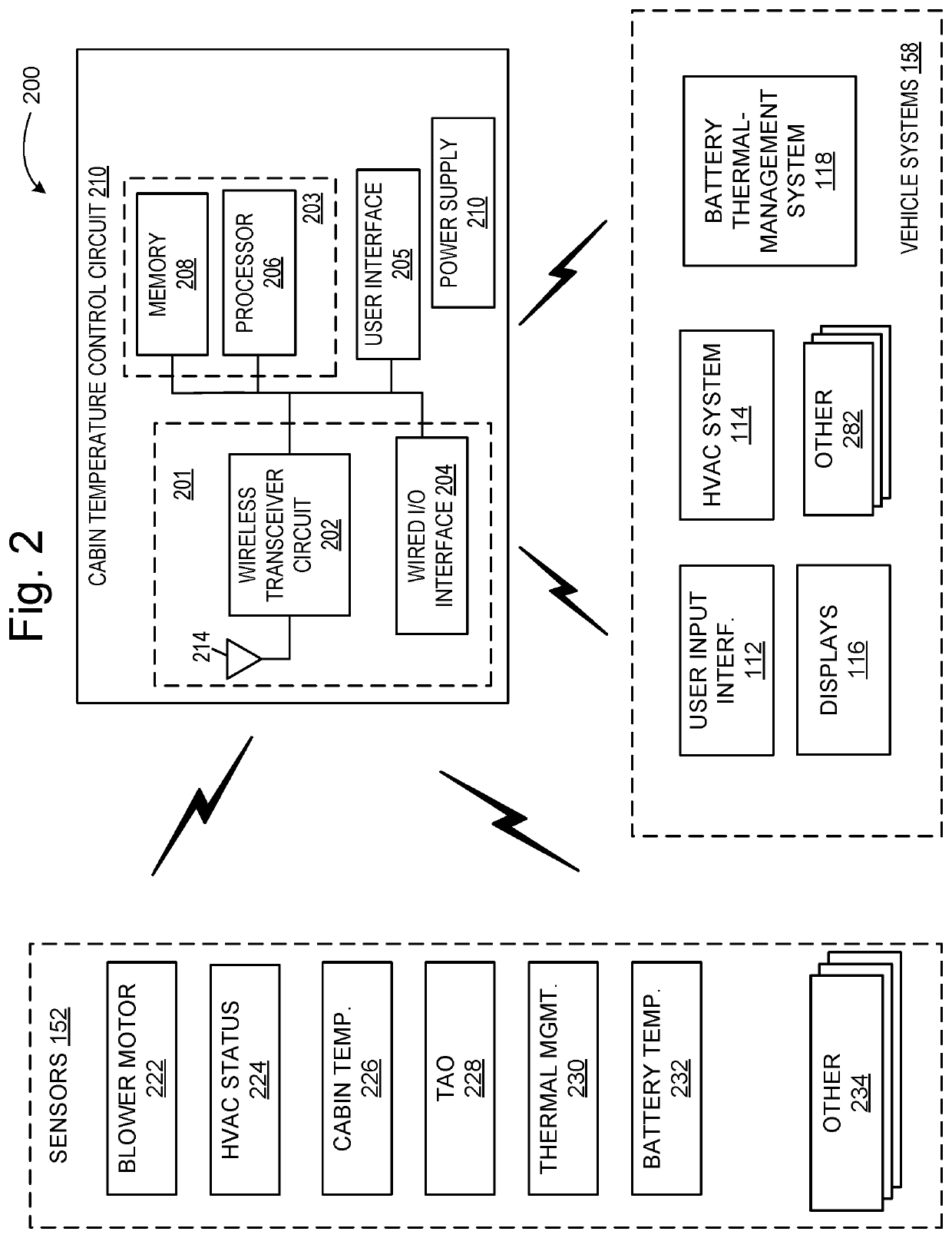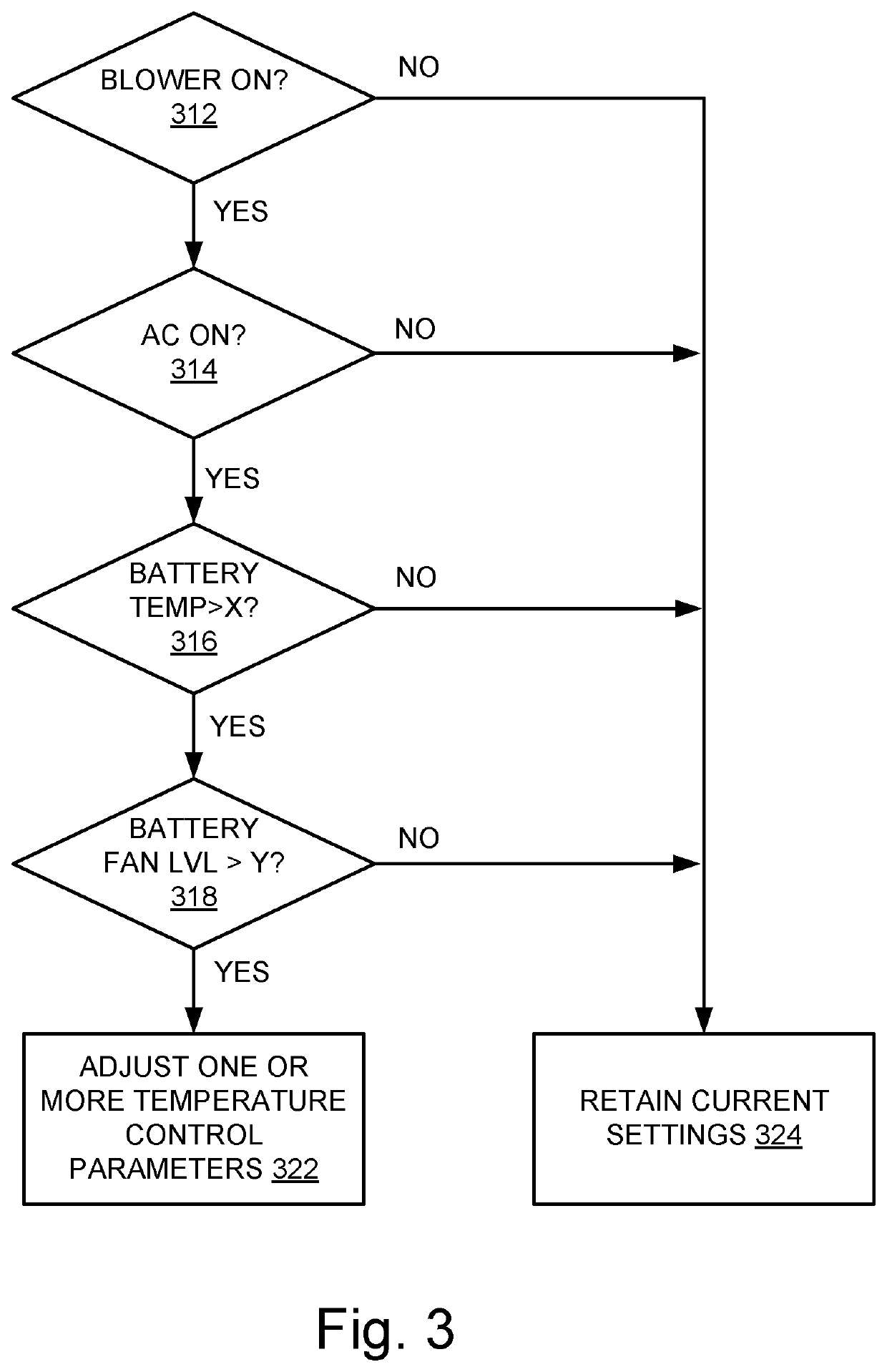Rear cabin thermal management systems and methods
a technology for thermal management systems and rear cabins, applied in vehicle heating/cooling devices, vehicle components, transportation and packaging, etc., can solve problems such as affecting cabin temperature, damage to battery cells, and excessive warming of the vehicle's cabin
- Summary
- Abstract
- Description
- Claims
- Application Information
AI Technical Summary
Benefits of technology
Problems solved by technology
Method used
Image
Examples
Embodiment Construction
[0034]Embodiments of the systems and methods disclosed herein can be configured to maintain a level of comfort in a rear cabin of a hybrid electric vehicle or an electric vehicle by adjusting vehicle parameters to offset a thermal impact on the rear cabin caused by battery thermal-management systems.
[0035]Conventional vehicular technologies allow battery thermal-management systems to operate in the normal mode to control the operation of a vehicle's battery pack (e.g., one or more batteries) without considering the impact it may have on passenger comfort in general and rear passenger comfort in particular. Systems used to cool batteries in hybrid electric vehicles or electric vehicles can pull cool air from the cabin, or radiate, convect or conduct heat to the cabin. Current systems relying on a cabin-temperature sensor in the front of the cabin, such as on or near the dashboard, center stack or center console, might not effectively address rear cabin temperature increases caused by...
PUM
 Login to View More
Login to View More Abstract
Description
Claims
Application Information
 Login to View More
Login to View More - R&D
- Intellectual Property
- Life Sciences
- Materials
- Tech Scout
- Unparalleled Data Quality
- Higher Quality Content
- 60% Fewer Hallucinations
Browse by: Latest US Patents, China's latest patents, Technical Efficacy Thesaurus, Application Domain, Technology Topic, Popular Technical Reports.
© 2025 PatSnap. All rights reserved.Legal|Privacy policy|Modern Slavery Act Transparency Statement|Sitemap|About US| Contact US: help@patsnap.com



